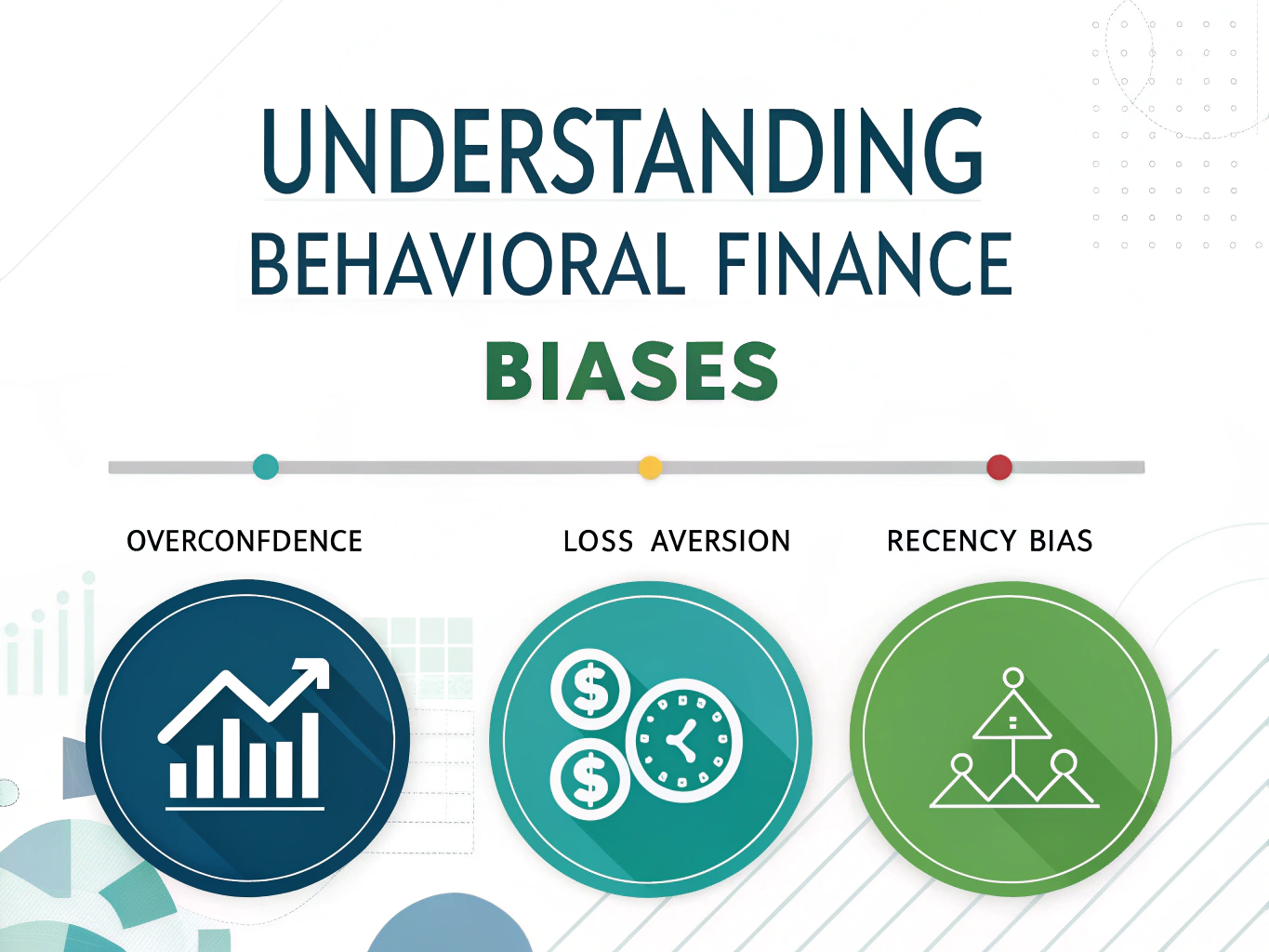Behavioral Finance Bias Assessment
Is this tool helpful?
How to Use the Behavioral Finance Bias Assessor Effectively
To get the most accurate assessment of your behavioral finance biases, follow these steps:
- Enter your overconfidence bias score (0-100): Rate how confident you are in your investment decisions. For example, if you frequently trade based on your market predictions without thorough research, you might score 85. If you regularly second-guess your decisions and seek multiple opinions, you might score 30.
- Input your loss aversion bias score (0-100): Evaluate how much the fear of losses influences your investment decisions. For instance, if you hold onto losing investments too long hoping to break even, you might score 90. If you’re comfortable taking calculated risks and can cut losses when needed, you might score 40.
- Provide your recency bias score (0-100): Assess how much recent market events impact your decisions. For example, if you significantly changed your investment strategy after the latest market correction, you might score 75. If you maintain a consistent long-term approach regardless of market fluctuations, you might score 25.
The tool will calculate your overall bias score using the following formula:
$$ \text{Bias Score} = \frac{\text{Overconfidence} + \text{Loss Aversion} + \text{Recency}}{3} \times 100 $$Understanding Behavioral Finance Biases
The Behavioral Finance Bias Assessor is a sophisticated tool designed to help investors and financial professionals identify and quantify common cognitive biases that can impact investment decisions. By understanding these biases, individuals can develop more effective strategies to mitigate their influence on financial decision-making.
The Three Core Biases
- Overconfidence Bias: The tendency to overestimate one’s ability to make accurate predictions or assessments in financial markets.
- Loss Aversion Bias: The psychological tendency to feel the pain of losses more intensely than the pleasure of equivalent gains.
- Recency Bias: The inclination to give more weight to recent events and experiences when making decisions about the future.
Benefits of Using the Behavioral Finance Bias Assessor
1. Enhanced Self-Awareness
Understanding your personal bias profile helps you:
- Recognize patterns in your investment decision-making
- Identify areas where emotions might be clouding judgment
- Develop more objective investment strategies
2. Improved Risk Management
Quantifying biases enables:
- Better portfolio diversification decisions
- More balanced risk assessment
- Enhanced long-term investment outcomes
3. Professional Development
For financial professionals, the tool offers:
- A structured approach to understanding client behavior
- Better client communication strategies
- More effective financial advisory services
Practical Applications and Problem-Solving
Example Calculations
Consider these scenarios:
Conservative Investor Profile:
- Overconfidence: 35
- Loss Aversion: 80
- Recency: 45
- Calculated Bias Score: (35 + 80 + 45) ÷ 3 × 100 = 53.33
Aggressive Trader Profile:
- Overconfidence: 90
- Loss Aversion: 30
- Recency: 85
- Calculated Bias Score: (90 + 30 + 85) ÷ 3 × 100 = 68.33
Real-World Applications
Individual Investors
Use the tool to:
- Create personalized investment strategies
- Develop bias mitigation techniques
- Track bias changes over time
Financial Advisors
Implementation strategies:
- Client profiling and relationship management
- Portfolio customization based on bias profiles
- Educational resource development
Investment Firms
Organizational applications:
- Team member assessment and development
- Risk management framework enhancement
- Decision-making process improvement
Frequently Asked Questions
What are behavioral finance biases?
Behavioral finance biases are systematic patterns of deviation from rational decision-making that can affect investment choices and financial outcomes. They are inherent psychological tendencies that can lead to suboptimal financial decisions.
How often should I assess my biases?
Regular assessment, typically quarterly or during significant market events, helps track changes in your behavioral patterns and adjust strategies accordingly.
Can behavioral biases be completely eliminated?
While biases cannot be completely eliminated, awareness and structured decision-making processes can help minimize their impact on investment decisions.
How can I use my bias score to improve my investment strategy?
Use your bias score to develop targeted mitigation strategies, such as implementing systematic investment processes, seeking contrary opinions, or using automated trading systems when appropriate.
Is there an ideal bias score?
There’s no ideal score as each investor’s situation is unique. The goal is to understand your biases and develop appropriate management strategies rather than achieving a specific score.
How do different market conditions affect behavioral biases?
Market volatility, economic uncertainty, and major market events can amplify behavioral biases, making regular assessment and adjustment of strategies particularly important during these periods.
What role do emotions play in behavioral biases?
Emotions significantly influence behavioral biases, often leading to reactive rather than proactive decision-making. Understanding this connection helps in developing more rational investment approaches.
How can I use this tool with other investment analysis methods?
Integrate bias assessment with traditional financial analysis, technical indicators, and fundamental research for a more comprehensive investment approach.
Important Disclaimer
The calculations, results, and content provided by our tools are not guaranteed to be accurate, complete, or reliable. Users are responsible for verifying and interpreting the results. Our content and tools may contain errors, biases, or inconsistencies. We reserve the right to save inputs and outputs from our tools for the purposes of error debugging, bias identification, and performance improvement. External companies providing AI models used in our tools may also save and process data in accordance with their own policies. By using our tools, you consent to this data collection and processing. We reserve the right to limit the usage of our tools based on current usability factors. By using our tools, you acknowledge that you have read, understood, and agreed to this disclaimer. You accept the inherent risks and limitations associated with the use of our tools and services.







